By Jaybhadra devi dasi
ISKCON Mayapur has been organizing the Sri Ksetra Parikrama for the past thirteen years but it has been performed since the time of Vidyapati, one of Lord Jagannatha’s most intimate worshippers who served under King Indradyumna. It is always held at Puri-dhama on the days prescribed in the scriptures and observed by previous generations.
The parikrama was blessed with the association of many senior devotees, including Indradyumna Maharaja disciple Bhakti Rasayan Sagar Maharaja from Russia, Prabodhananda Sarawati Maharaja, Bhakti Ashraya Vaishnava Maharaja, Bangladesh’s only sannyasi Bhakti Priya Gadadhar Maharaja, Bhakti Purusottama Maharaja, Gauranga Goswami Maharaja, Radha Govind Maharaja disciple Radharaman Maharaja (who leads the Vraja mandala Parikrama), Jayapataka Maharaja disciples Gauranitai dasa and Bhakti Nityananda Maharaja, and Sri Ksetra Parikrama chairman Sridama Govind dasa.
In attendance were five groups of devotees – Oriya, Bengali, Tamil, Hindi and International (English), all of whom arrived at Puri on November 25. That evening there was a parikrama inauguration ceremony at the beach, including Mahasagar arati, with kripa of Mahasagar. It was the greatest fortune to be here because of all the dhamas, Puri is the topmost. In Kali yuga the importance of Puri is paramount and all our sins are burned away when we enter Sri Ksetra. Puri is the Lord’s holiday resort. He does a lot of management in Vaikuntha, so He comes here just to relax. No tapasya here in Puri. We visited all the tirthas in Puri on November 26 and 27 and on the final day we did the Puri Parikrama.
DAY ONE – NOVEMEBER 26
From 6am to 9 am the devotees gathered at the Gopinath Hotel and from there went for darsana of Gambhira, Siddha Bakul, Sveta Ganga and Sarvabhauma Bhattacharya’s house. Puri is of the utmost importance for our sampradaya. Here Caitanya Mahaprabhu spent his last eighteen years and displayed His pastimes. At the back of the sea, He performed bathing of Haridas Thakur and declared that whoever takes bath here will be vanquished of all sins, because the water has touched the feet of Haridas Thakur. It is here where Bhaktivinoda Thakura prayed for a son to carry on preaching and Bhakti Siddhanta was born, and to the best disciple of Bhakti Siddhanta, Srila Prabhupada, Lord Jagannatha was very dear. At the age of five Srila Prabhupada performed Ratha yatra. In ISKCON’s early days in San Francisco, Malati mataji found a small deity of Jagannatha without knowing what it was and brought it to Srila Prabhupada, who then payed full dandavat to the deity and said, “Jagannatha has come to San Francisco.”
DAY TWO – NOVEMBER 27
We had darsana of Tota Gopinath, Chatak Mountain, Kapil Mochan Mahadev, Parmananda-puri’s well, Markandeya Sarovar and the Jagannatha Vallabha garden. After breakfast we went to the Nrsingha temple, Gundica temple and Indradyumna Sarovar.
Indradyumna Maharaja took darsana of Nilachala Hill and established his kingdom on the side of Gundica temple. Later he came to the place where Neela Madhav was being worshipped with Naradaji, but instead of Neela Madhav he found Lord Nrsingha and asked Narada Muni how Lord Nrsingha came here. Narada Muni said, “He is self-manifested so that no obstacle comes in your 1000 asvamedha yajna.” This Lord Nrsingha is called yajna Nrsingha and is installed near the Gundica temple.
Indradyumna Maharaja used to give cows in donation to Brahmanas. Indradyumna Sarovar was made by the hooves of many cows and was filled with sankalpa jala and cow urine. It is said that Indradyumna Sarovar is the same as Ganga. The process of taking darsana of Jagannatha at the Gundica temple is that one should first take bath in Indradyumna Sarovar and then go for darsana.
After Gundica marjan all the devotees with Caitanya Mahaprabhu went to Indradyumna Sarovar, where Caitanya Mahaprabhu told Advaitacarya to become Anantasesa and Mahaprabhu slept on Anantasesa. There is also a temple of Gundica and Indradyumna Maharaja at Indradyumna Sarovar. Jagannathaji does jala krida at Narendra Sarovar.
The Gundica temple is the birthplace of Jagannatha, Baladeva, and Subhadra and then They shifted to the Jagannatha temple. The Lord ordered Indradyumna Maharaja, “I will go once a year to my birthplace, Gundica temple.” Gundica is Vrindavan where the Lord is served simply and the Jagannatha temple is Dwaraka where the Lord is served with all opulence. That time Badadanda, that great road, was filled with sand and gardens on both sides. That time during Ratha yatra it seemed as the Lord was walking on the sand of the Yamuna. Taking darsana of Gundica one day is equal to ten years of darsana of Jagannatha, as it is Vrindavana. One who once takes darsana of Gundica, goes back to Godhead.
DAY THREE – NOVEMBER 28 – PURI PARIKRAMA
After seeing the sites of Sri Caitanya’s pastimes, the pilgrims participated in the 19km Puri Dhama Parikrama, circumambulating the entire sacred town of Puri. All the groups started from the beach at 6am simultaneously, in total about 5000 devotees. On the walk we had darsana of Bedi Hanuman and Sonar Gauranga.
Bedi Hanuman
A small seaside temple is dedicated to Lord Hanuman and is known as Daria Mahavir temple. In the local language daria means sea and Mahavir is another name of Lord Hanuman. The temple has an interesting story behind the name Bedi Hanuman. It is believed that Daria Mahavir protects Sankha Ksetra Puri against the fury of the sea. It is Daria Mahavir’s duty to see that the sea does not pass the periphery of Puri. But when the Jagannatha temple was built, Varuna, the God of the Sea, was able to come to the temple to pay his respects. In the meantime, sea water entered the city, causing considerable damage to the temple. The devotees prayed to Lord Jagannatha, who asked Hanuman to explain how the sea entered the city in his presence. Hanuman said that he was not present, having left for Ayodhya. On hearing about Hanuman’s unscheduled visit to Ayodhya, Lord Jagannatha tied Hanuman’s hands and feet with the rope (bedi) and asked him to be vigilant on the seashore day and night. Since then, because his hands and feet were tied, he has been known as Bedi Hanuman. There is a popular belief that from then the sea has never entered the city.

Bengali group 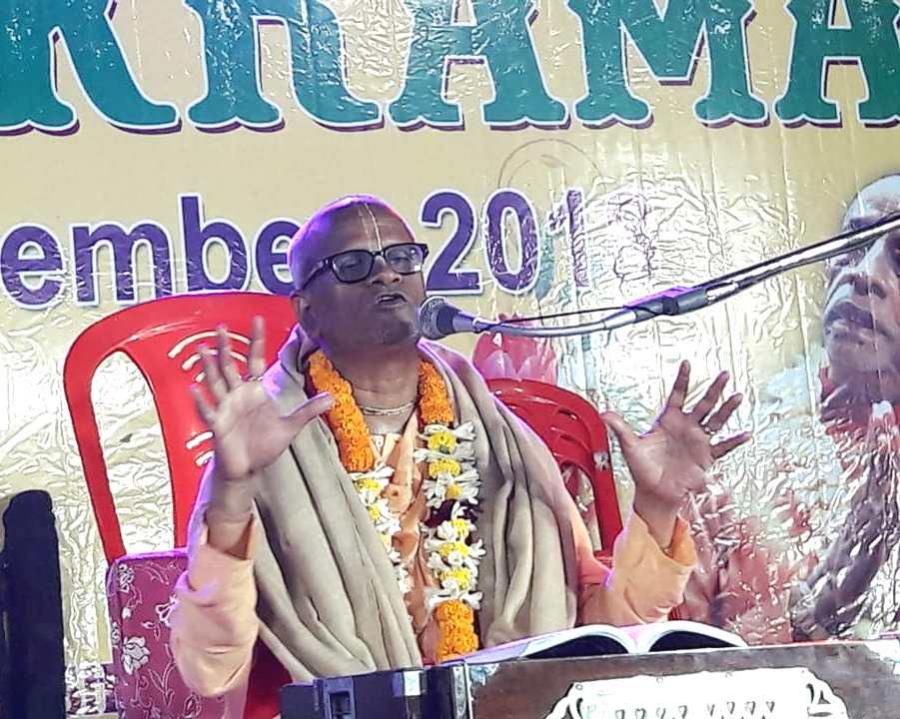
Bhakti Purusottam Maharaja welcoming devotees 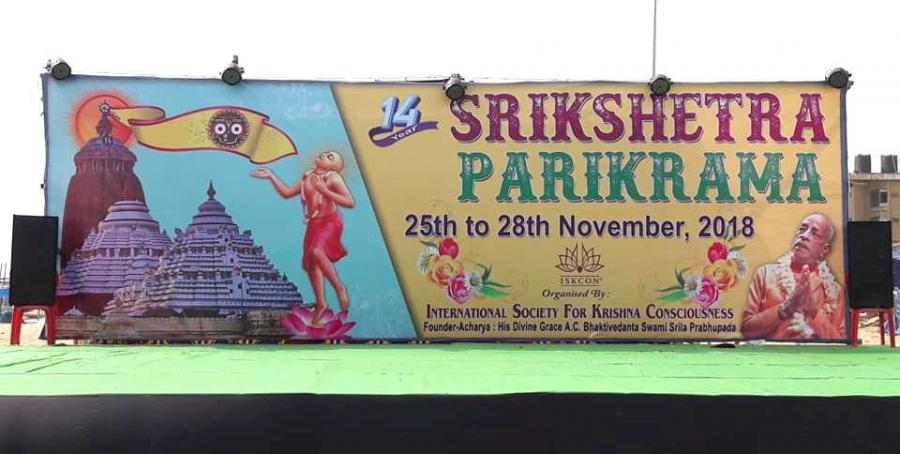
Big banner at the beach 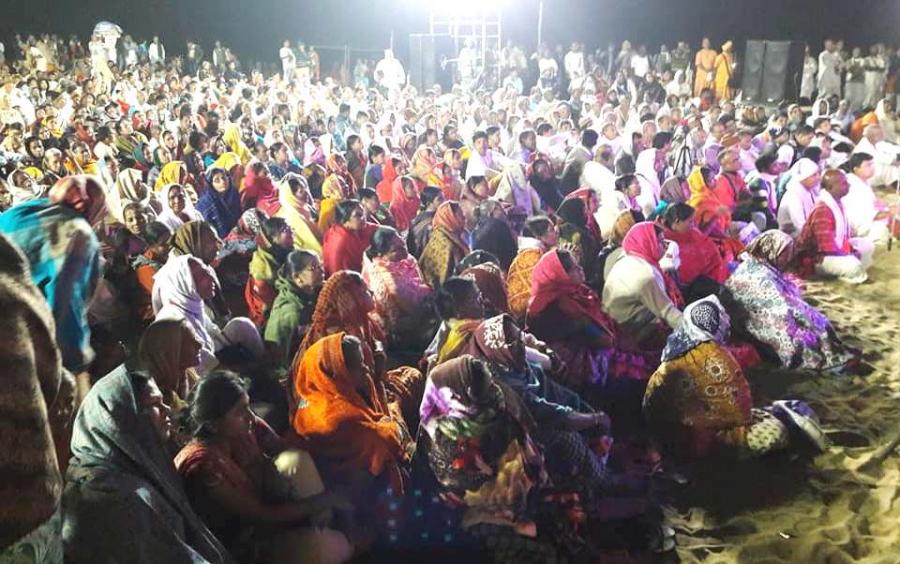
Day one -Parikrama adhivas ceremony at beach 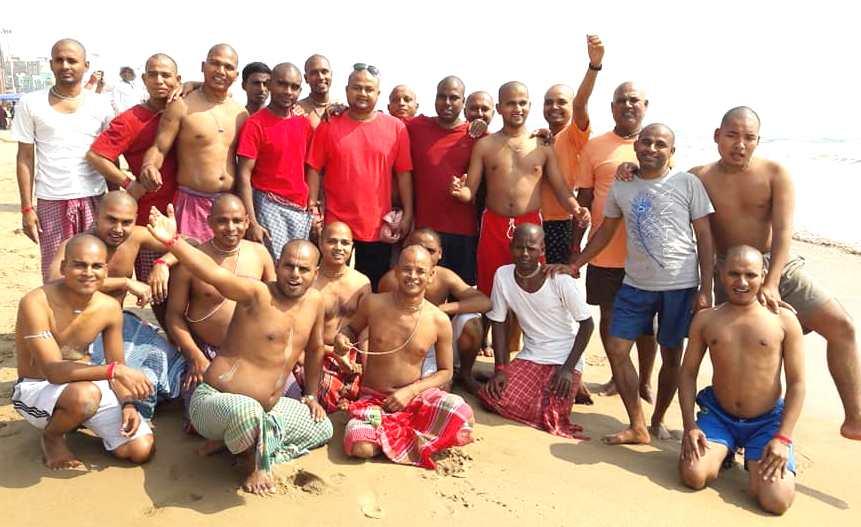
Devotees at the beach 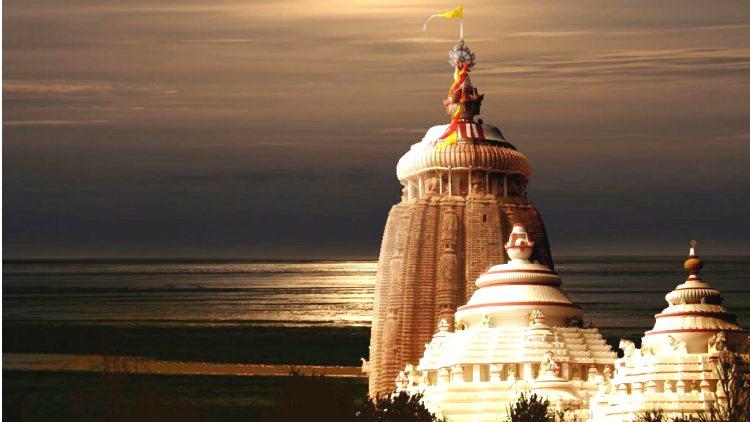
Jaganatha temple 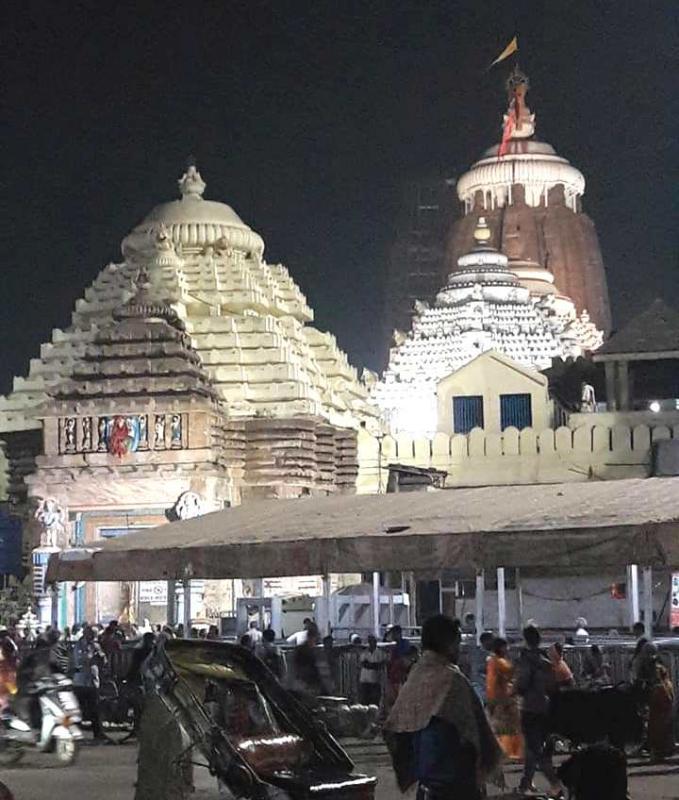
Jaganatha temple 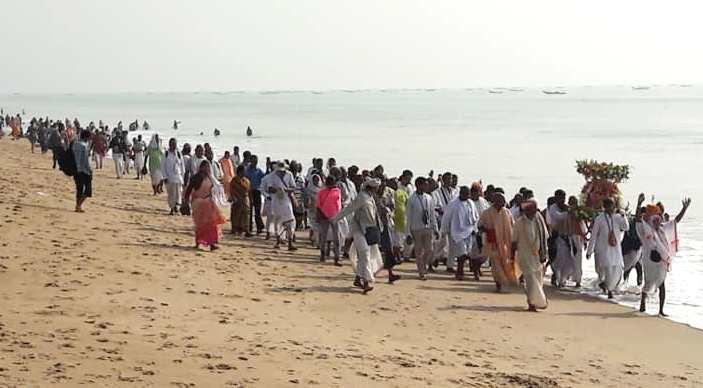
Parikrama along the sea beach 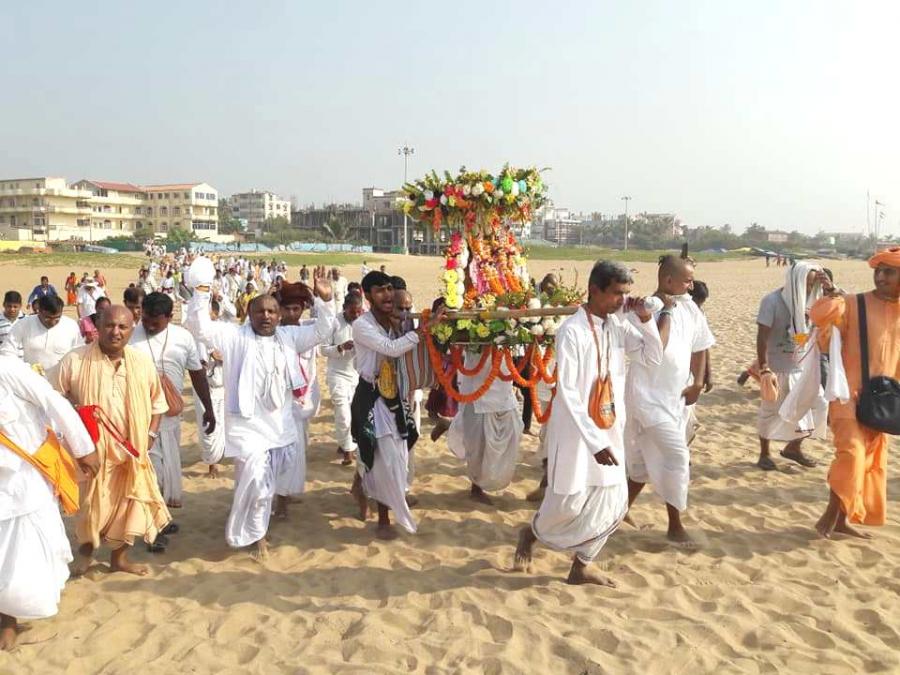
Parikrama deities Gaura Nitai 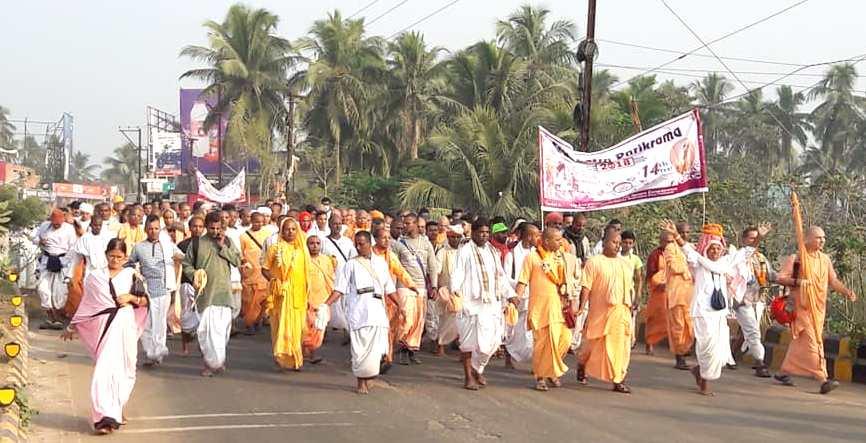
Parikrama started 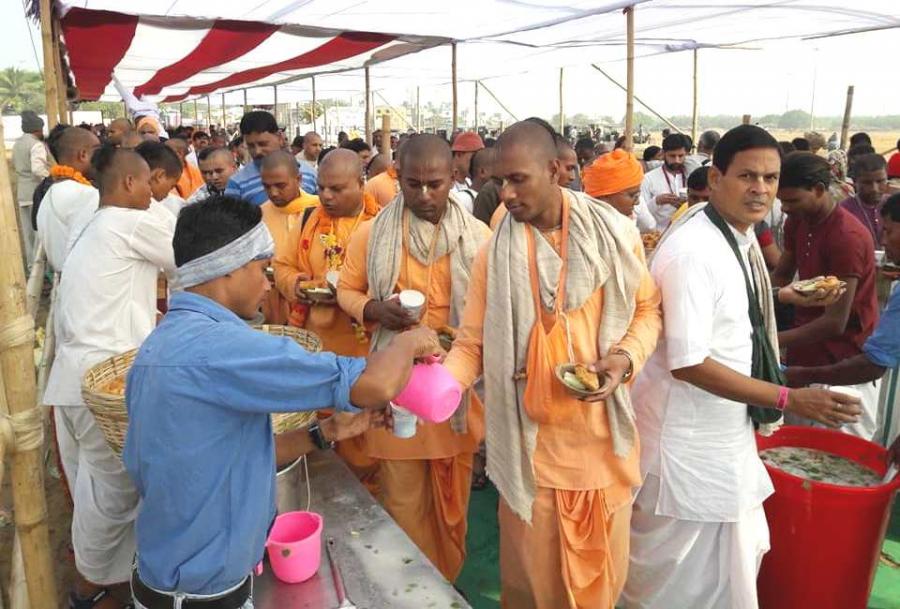
Prasadam being served 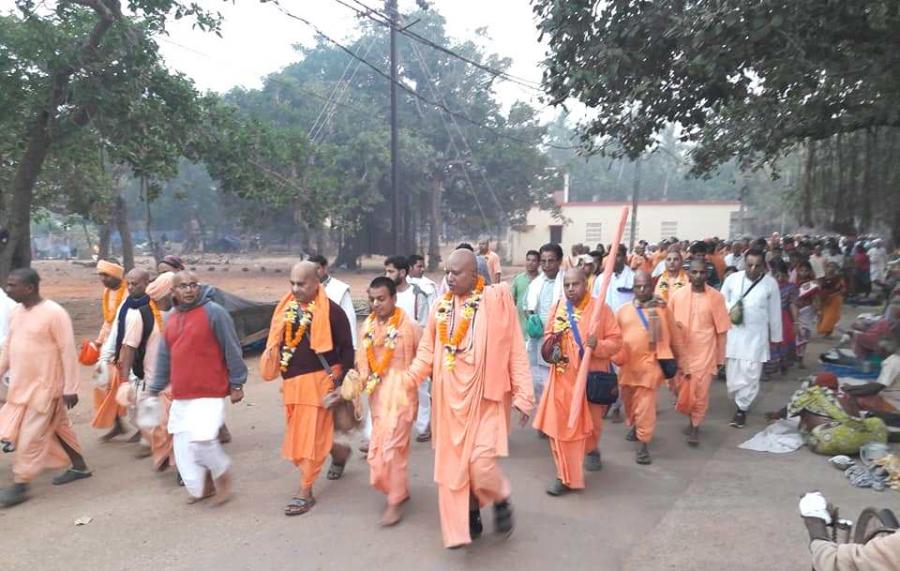
Senior devotees in parikrama 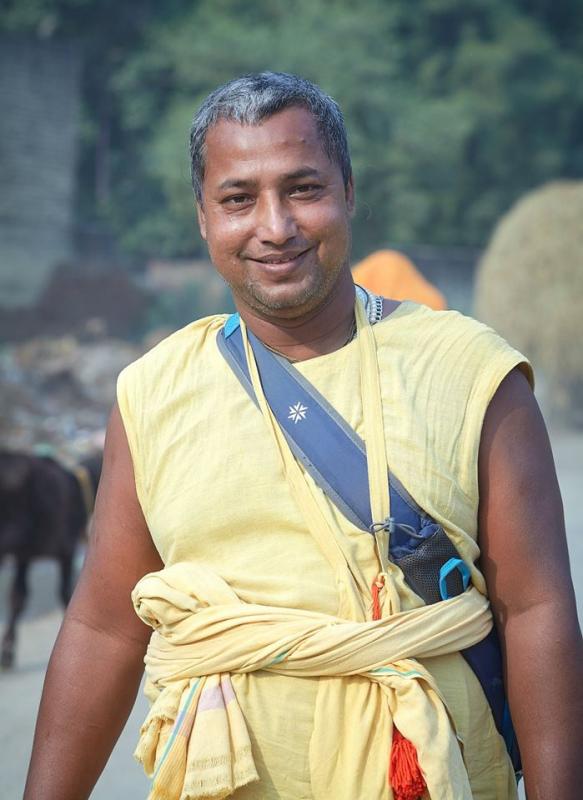
Upendra Krsna Dasa our photographer

